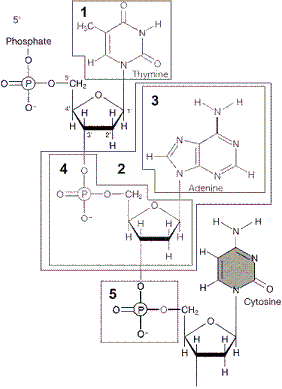Explain the pathology, diagnosis, and treatment of gastric ulcers caused by Helicobacter pylori
What will be an ideal response?
Answer: H. pylori can be spread either by person-to-person contact or by ingesting contaminated food or water. The pathogen colonizes the non-acidic gastric mucus layer of the stomach, where it produces a cytotoxin, lipopolysaccharide (LPS), and urease, which cause inflammation, tissue destruction, and ulceration. Chronic infection of H. pylori can lead to gastric ulcer formation. A clinical diagnostic such as the in vivo detection of urease by ingestion of 13C urea and the presence of 13CO2 likely indicates H. pylori presence, however identification of the pathogen from a gastric ulcer biopsy is most definitive. A two-week regimen combining an antibacterial compound (e.g., metranidazole), an antibiotic (e.g., tetracycline), and an antacid generally kill the pathogen.
You might also like to view...
In Figure 12-1, the portion of the molecule in box __________ is

a. 1
b. 3
c. 4
d. 1 and 3
e. 3 and 4
Which of the following is associated with dental caries?
A. Lactococcus lactis B. Streptococcus mutans C. Enterococcus faecalis D. Streptococcus pneumoniae
)
A. Microbes cause destructive genetic changes to host cells. B. Microbes block host cell respiration pathways. C. Microbes alter host blood glucose levels. D. Microbes release toxins or enzymes that break down host tissue. E. Microbes activate a host response that is itself destructive to host tissue. F. Microbes disrupt the host's endocrine system.
What is different about the way that NADH and FADH2 donate electrons to the electron transport chain?
A. NADH is oxidized and FADH2 is reduced. B. NADH contributes its electrons to the first transmembrane complex in the electron transport chain and FADH2 contributes its electrons after the first transmembrane complex. C. More protons are transported into the intermembrane space of the mitochondria in response to one molecule of FADH2 as compared to the number of protons transported in response to one molecule of NADH. D. The electrons from NADH ultimately go on to reduce oxygen to generate water, whereas the electrons from FADH2 are used to reduce pyruvate to lactate.